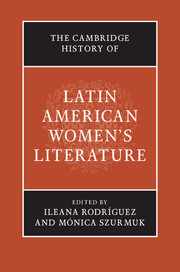
- Cited by 1
-
Cited byCrossref Citations
This Book has been cited by the following publications. This list is generated based on data provided by Crossref.
Gomez Pereira, Vanessa 2020. María Rosa Oliver: visible ausente. Una revisión del canon intelectual latinoamericano. La Manzana de la Discordia, Vol. 15, Issue. 1, p. 171.
- Publisher:
- Cambridge University Press
- Online publication date:
- November 2015
- Print publication year:
- 2015
- Online ISBN:
- 9781316050859


